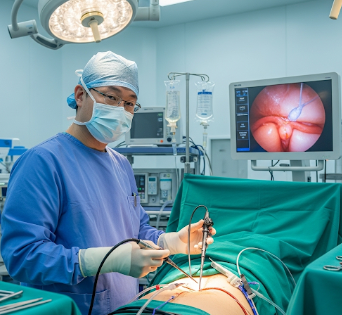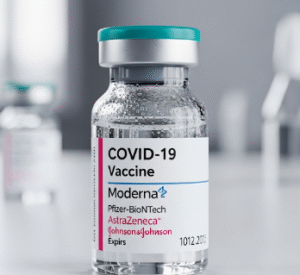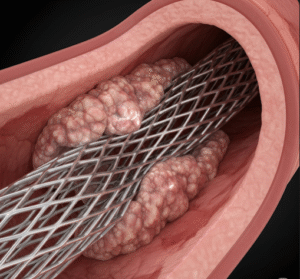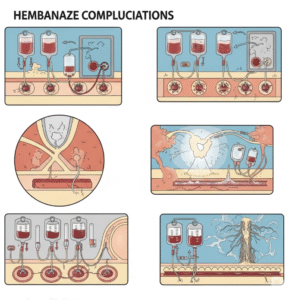Overview
A bladder-neck incision (BNI) is a surgical procedure performed to treat bladder outlet obstruction, a condition where urine flow is blocked due to narrowing of the bladder neck. Unlike more extensive surgeries, BNI is a minimally invasive endoscopic procedure that helps restore normal urination. It is often used for men with benign prostatic hyperplasia (BPH), bladder-neck contractures, or urinary retention problems that do not respond to medication.
In South Korea, bladder-neck incision is widely performed with advanced endoscopic and laser-assisted techniques, ensuring precision, reduced bleeding, and faster recovery. Korean hospitals are internationally recognized for their modern equipment, experienced urologists, and patient-centered aftercare, making them a top choice for international patients seeking effective solutions for urinary difficulties.
What is Bladder-Neck Incision?
A bladder-neck incision is a urological procedure that involves making one or more small cuts at the bladder neck—the junction between the bladder and urethra. These incisions widen the passage, allowing urine to flow freely. Unlike transurethral resection of the prostate (TURP), which removes tissue, BNI focuses on relaxing and opening the obstruction rather than cutting out large sections.
BNI is especially useful for:
- Men with small prostates but significant urinary blockage
- Younger men with bladder-neck contractures
- Patients who cannot tolerate major surgery
What are the Benefits?
Bladder-neck incision provides multiple advantages for patients:
✔ Effective relief of urinary symptoms such as weak stream, incomplete emptying, or frequent urination.
✔ Minimally invasive with small incisions and no major tissue removal.
✔ Short hospital stay, often same-day or overnight.
✔ Reduced risk of complications compared to TURP.
✔ Faster recovery and return to normal activities.
✔ Advanced laser-assisted BNI in Korea offers more precision and less bleeding.
Procedure Details
1) How should I prepare for Bladder-Neck Incision?
Preparation includes:
- Medical evaluation with urine tests, blood tests, and imaging studies.
- Cystoscopy may be performed before surgery to confirm the blockage.
- Discontinuation of blood thinners like aspirin or warfarin under doctor’s guidance.
- Fasting for 6–8 hours before the procedure if general anesthesia is planned.
- Discussion of risks and benefits with a urologist.
In South Korea, hospitals provide comprehensive preoperative counseling and sometimes offer minimally invasive laser BNIs as first-line surgical treatment.
2) What happens during the procedure Bladder-Neck Incision?
The procedure usually lasts 30–45 minutes and is performed under general or spinal anesthesia:
- A resectoscope (thin tube with a camera and surgical tool) is inserted into the urethra.
- Using either electrocautery or laser energy, the surgeon makes 1–2 incisions at the bladder neck.
- These incisions widen the bladder outlet and reduce obstruction.
- No large tissue removal is required.
- A urinary catheter may be placed temporarily to aid healing.
Korean hospitals often use holmium or thulium lasers for BNI, which provide high precision, minimal blood loss, and quick recovery.
3) What happens after a Bladder-Neck Incision?
Post-surgery recovery typically involves:
- Short hospital stay, usually 1 day.
- Urinary catheter kept in place for 1–2 days to allow healing.
- Mild burning sensation or frequency of urination for a few days.
- Patients usually return to normal activities within 1 week.
- A follow-up visit is scheduled to monitor progress.
In Korea, patients benefit from personalized aftercare programs, including routine follow-ups, bladder function tests, and lifestyle counseling.
Risks / Benefits
Possible Risks:
- ➤ Temporary burning or urgency when urinating
- ➤ Mild bleeding or infection
- ➤ Retrograde ejaculation (semen flowing into the bladder instead of out)
- ➤ Rare: scar tissue recurrence or need for repeat surgery
Major Benefits:
- ✔ Quick symptom relief from urinary obstruction.
- ✔ Minimally invasive with fast recovery.
- ✔ Lower complication rates than traditional surgeries.
- ✔ Improved quality of life and bladder function.
Recovery and Outlook
Recovery from bladder-neck incision is generally fast and smooth:
- Most patients resume normal daily activities within 1 week.
- Complete healing and symptom improvement occur within 4–6 weeks.
- Long-term outlook is excellent, with most men experiencing significant and lasting relief from urinary problems.
- Some may require medication or additional treatments if symptoms recur.
Korea’s state-of-the-art facilities and follow-up care ensure excellent outcomes with minimal risk.
When To Call the Doctor
Patients should seek medical attention if they experience:
- ➤ Heavy bleeding or blood clots in urine
- ➤ Severe pain not improving with medication
- ➤ High fever or chills indicating infection
- ➤ Difficulty urinating after catheter removal
- ➤ Persistent urinary problems beyond expected recovery
Best Korea Option / Process
South Korea is a global leader in minimally invasive urological surgery, including bladder-neck incision. Patients benefit from:
- Advanced laser-assisted BNI for greater accuracy and safety.
- Highly skilled urologists with international experience.
- Modern diagnostic tools like 3D imaging and video-assisted endoscopy.
- Short hospital stays and efficient care pathways.
- Affordable costs compared to the US and Europe, without compromising quality.
Top hospitals such as Seoul National University Hospital, Asan Medical Center, and Severance Hospital provide world-class care with comprehensive pre- and post-treatment services.













